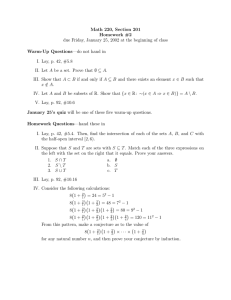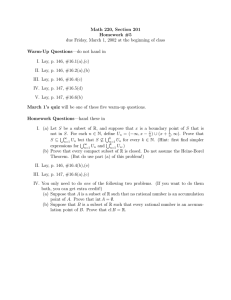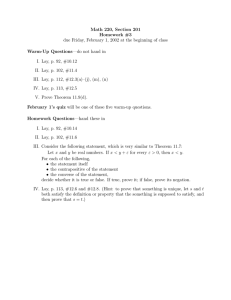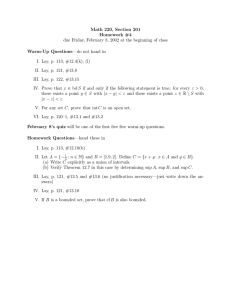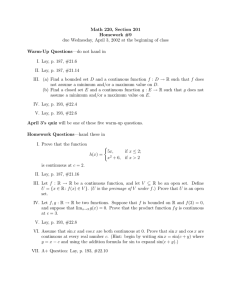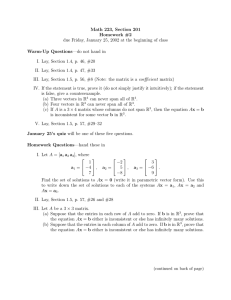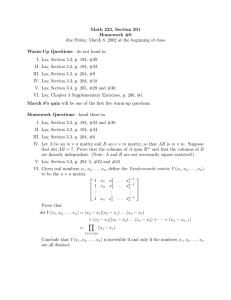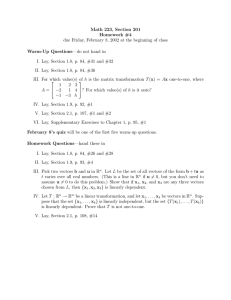Math 220, Section 201 Homework #6 Warm-Up Questions
advertisement
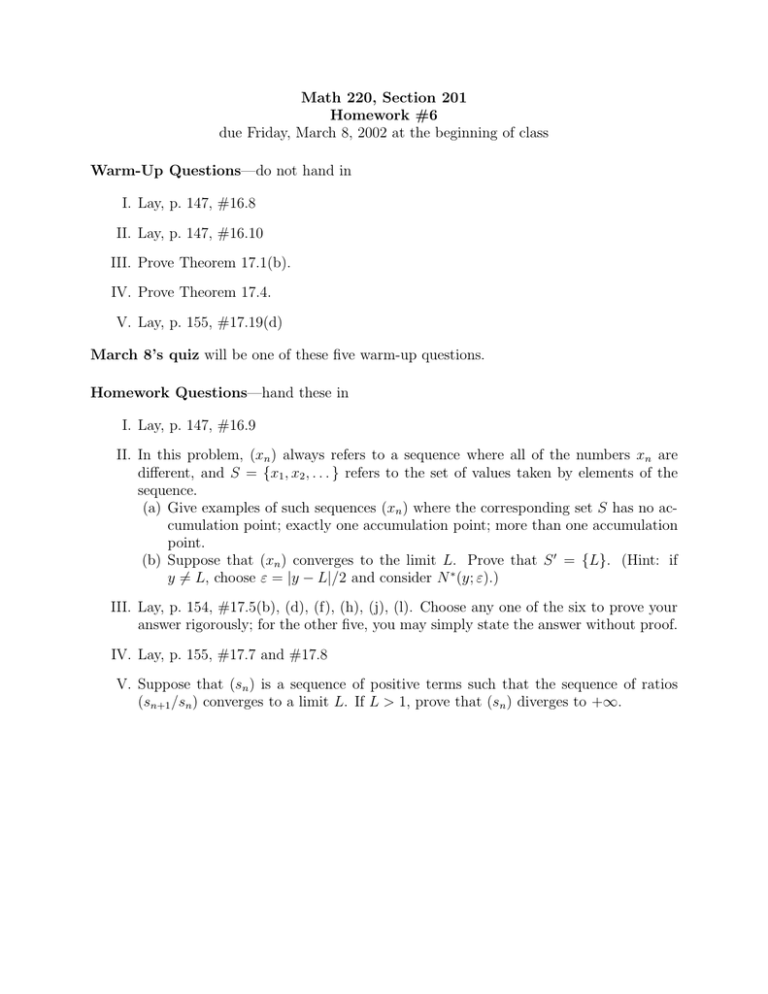
Math 220, Section 201
Homework #6
due Friday, March 8, 2002 at the beginning of class
Warm-Up Questions—do not hand in
I. Lay, p. 147, #16.8
II. Lay, p. 147, #16.10
III. Prove Theorem 17.1(b).
IV. Prove Theorem 17.4.
V. Lay, p. 155, #17.19(d)
March 8’s quiz will be one of these five warm-up questions.
Homework Questions—hand these in
I. Lay, p. 147, #16.9
II. In this problem, (xn ) always refers to a sequence where all of the numbers xn are
different, and S = {x1 , x2 , . . . } refers to the set of values taken by elements of the
sequence.
(a) Give examples of such sequences (xn ) where the corresponding set S has no accumulation point; exactly one accumulation point; more than one accumulation
point.
(b) Suppose that (xn ) converges to the limit L. Prove that S 0 = {L}. (Hint: if
y 6= L, choose ε = |y − L|/2 and consider N ∗ (y; ε).)
III. Lay, p. 154, #17.5(b), (d), (f), (h), (j), (l). Choose any one of the six to prove your
answer rigorously; for the other five, you may simply state the answer without proof.
IV. Lay, p. 155, #17.7 and #17.8
V. Suppose that (sn ) is a sequence of positive terms such that the sequence of ratios
(sn+1 /sn ) converges to a limit L. If L > 1, prove that (sn ) diverges to +∞.
